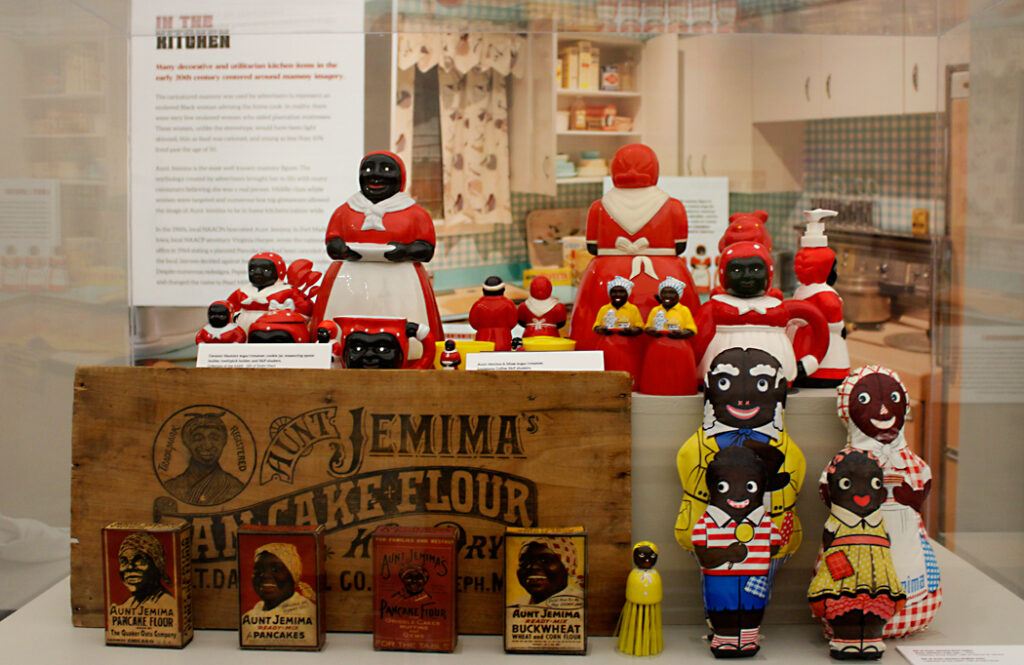
The African American Museum of Iowa’s (AAMI) latest exhibit, Racist Things: Hateful Imagery in the American Home, thoughtfully examines how post-Civil War society and Jim Crow laws perpetuated dehumanizing Black imagery. While this imagery was used across pop culture and mass media, it was also disturbingly insidious within the American home. From salt and pepper shakers to lawn ornaments, objects of racism were accepted for decades as common household items. They became a form of propaganda used to create racial stereotypes and biases that continue to impact our culture to this day.
Modern audiences may be shocked that such things ever existed and wonder why viewing these outdated artifacts is necessary. Exhibition curator Felicite Wolfe has a good answer for that. “We often hear that racism doesn’t exist anymore, or that it doesn’t happen in Iowa,” she says. “The AAMI is always challenging that idea, and this exhibit is no exception.” She felt it was important to take a closer look at items that were once commonplace in American households and question their origins. “Where did they come from? Why were Black Americans portrayed in this way? Why were their bodies used as objects to advertise products?”
Wolfe adds that a lot of people probably never thought about what was behind the images, which makes seeing them again even more critical. “For a century, these objects portrayed a physical manifestation of anti-Black thought that was socially accepted. The country was also racially segregated, so often white people only knew of Black people through these objects. This is where a lot of bias and stereotypes come from that we still see today.”
Wolfe explains the exhibit was created as a challenge to the idea that the objects shown are harmless and don’t influence our perceptions of the Black community. “The repetition of these stereotypes has created a mental image and bias that we carry and need to rectify,” she explains. She selected items for the exhibit based on which ones would best show their origins and the thought processes behind their creation. “For better or worse, we have a substantial collection of racist items,” she says. “The exhibit only shows some of what we have. Almost all the objects came from an Iowa donor. Typically, items come to us from donors who are cleaning out the home of a relative or were found in an antique shop.”
Wolfe wants viewers to know that Racist Things is not an easy exhibit to walk through. “It contains troubling and potentially triggering images and historical content,” she says. While some visitors may initially see these objects “as harmless or nostalgic, the racial caricatures and stereotypes have real consequences. The Black community continues to suffer trauma from perpetuated beliefs and attitudes white culture has learned through media and material culture.”
That said, Wolfe emphatically encourages everyone to see it. “As uncomfortable as the content is, it is a necessary, eye-opening learning opportunity for everyone to start reconciling with the subject and begin healing.”
Racist Things: Hateful Imagery in the American Home at the AAMI in Cedar Rapids runs through August 16, 2025. For more information, visit BlackIowa.org.
